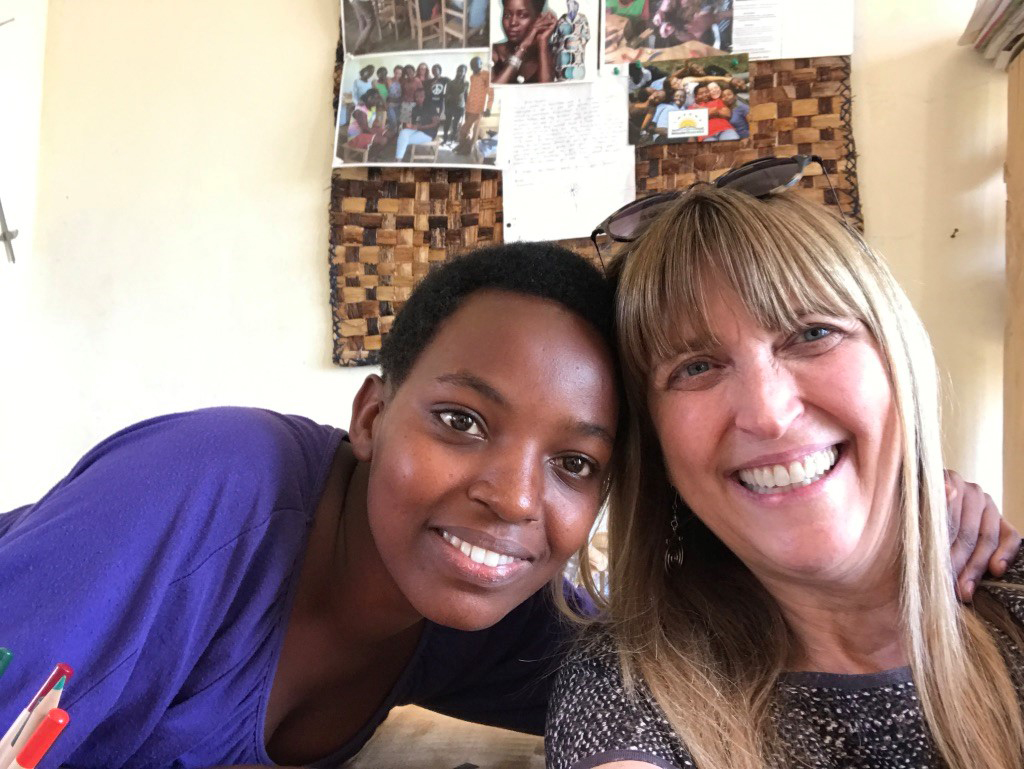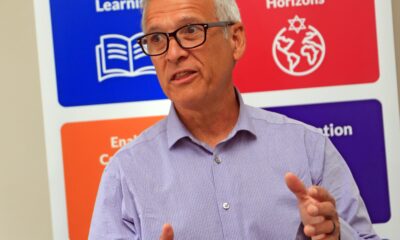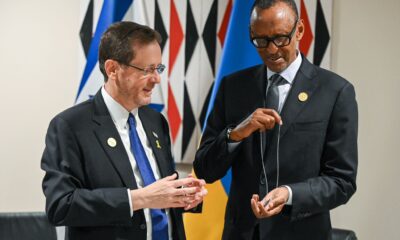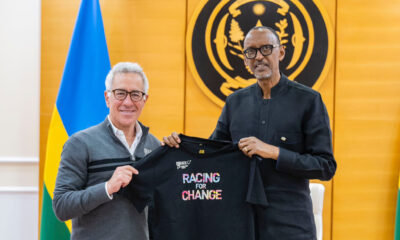
Featured Item

Rwanda: the ‘never again’ that was repeated
“Rwanda, for many second-generation Holocaust survivors, is a kindred experience,” says Tali Nates, the founder and executive director of the Johannesburg Holocaust & Genocide Centre. “I remember going to a church in Rwanda that had been a killing site, and someone had written in Kinyarwanda and English, in blue handwriting on a white canvas, ‘Never Again’, and I thought … really?”
This is one of the moments of connection that drew Nates into becoming a guardian, not just of memory linked to her own background as the daughter of an Oskar Schindler survivor, but that of the atrocities in Rwanda as well.
Nates has pursued this “memory activism” in her capacity as chairperson of the South African Holocaust & Genocide Foundation, as well as heading up the Johannesburg Holocaust & Genocide Centre. Most recently, the foundation launched two publications – one of testimony from Holocaust survivors who had links to South Africa, and another containing the equivalent from Rwandan survivors.
7 April marks the 27th commemoration of the 1994 genocide against the Tutsi minority in Rwanda perpetrated by the Hutu-extremist-led government. Nates has been involved in a UNESCO (United Nations Educational, Scientific and Cultural Organisation) panel discussion, as well as writing on the subject for the UN this month.
In fact, she is one of the earliest pioneers not just on the continent but internationally of educational programmes and commemorative activities that draw on links between this genocide and the Holocaust, as well as the South African experience of apartheid.
She is careful to note, however, that she didn’t see the correlation between the genocide in Rwanda, the Holocaust, or the South African context immediately.
“On 27 April 1994, we were standing in the election queue for hours and there was such elation, happiness, and relief at the coming of democracy and Nelson Mandela. Yet, at this point, it was three weeks into the genocide in Rwanda. There were already thousands upon thousands of people who had been murdered. And I didn’t yet make the connection. For me, that’s the real red light or warning: that even those of us who have been involved in this topic for years didn’t make the connection. [Going forward], we have to recognise these connections earlier and to do that, we need education.”
For Nates, it was only months later, when news footage and stories came out and survivors began to arrive in South Africa, that she started to pick up the resonance between these events. At the time, she was working with the Foundation for Tolerance Education, and it liaised with the department of education in Rwanda to initiate teaching programmes on the subject.
Telling the Rwandan story alongside that of the Holocaust wasn’t about comparing them but rather “with sensitivity and impact” placing them side by side for connections to emerge.
“The Holocaust was an unprecedented case of genocide in history. Gas chambers were never built again and hopefully will never be built again. But those who committed genocide in Rwanda learnt how to kill much quicker. In 100 days, they killed one million people.
“There is a process to telling the stories in a dignified and meaningful way.”
In terms of her work at the Johannesburg Holocaust & Genocide Centre, Nates notes that it doesn’t function as a place marker for a site of genocide. Instead, it serves as a “space of memory”, which asks people to reflect on morality and choices, encouraging them to contemplate “where things went wrong in the past” and reflect deeply about “where we should go now”.
For Nates, it was being on the ground in Rwanda that would come to shape her priorities in the work that the centre does now.
In 2003, she made a documentary with Paula Slier that explored travelling to Poland and Israel to explore her personal history of the Holocaust, and then to Rwanda to document its experience of genocide. It was the first of about 30 visits to the country.
However, it was an individual encounter with a survivor at a later visit that remains most indelible in Nate’s mind.
In 2006, she travelled to Rwanda with the cast and crew of a play called Truth in Translation that dealt with the Truth and Reconciliation Commission in South Africa. While there, she served as a facilitator for audience discussions and took the cast around the country to see key sites of genocide.
“One of our drivers was a survivor himself. He had a big machete scar on his head, and he was very shy. In the morning, we visited the Kigali genocide memorial where there are mass graves of 250 000 victims. His parents and siblings were buried there.
“That day, he was very sad and withdrawn. You could see it. In the afternoon, we visited other memorial sites, and he just sat outside with his hands down.
“I left the group and sat next to him, and I took his hand. We held hands. I said, ‘I am so sorry and my thoughts are with you.’ I said, ‘I don’t know how you are feeling, but I know it also happened to my family about 60 years ago [at that stage] in Europe. My grandmother, my aunts, and the rest of my family were also killed in a genocide, and I don’t have graves for them.’
“I will never forget it, he touched my face, in disbelief,” Nates says.
There seemed two facets to his response. One was perhaps a realisation that these atrocities cut across racial lines. “On the other level, I think it was shock. ‘So if it happened before, then how come it has happened to me…?’
“All my life, I grew up with the Holocaust as the daughter of two parents from Poland. The lessons about choices, about the need for moral leadership, were always there. When you go to Rwanda, when you speak to survivors and get close to people, there is no way you won’t feel a bond.
“You stand in the churches that were killing sites for those dark three months of the genocide. In earlier years, you would still see the clothes on the floor, the piles of bones. In Murambi, which was a huge killing site where about 40 000 people were murdered, as an act of commemoration, they mummified some of the bodies. It’s like when you go to Madjanek and see the pile of ashes or to Auschwitz and see the ash pool.”










